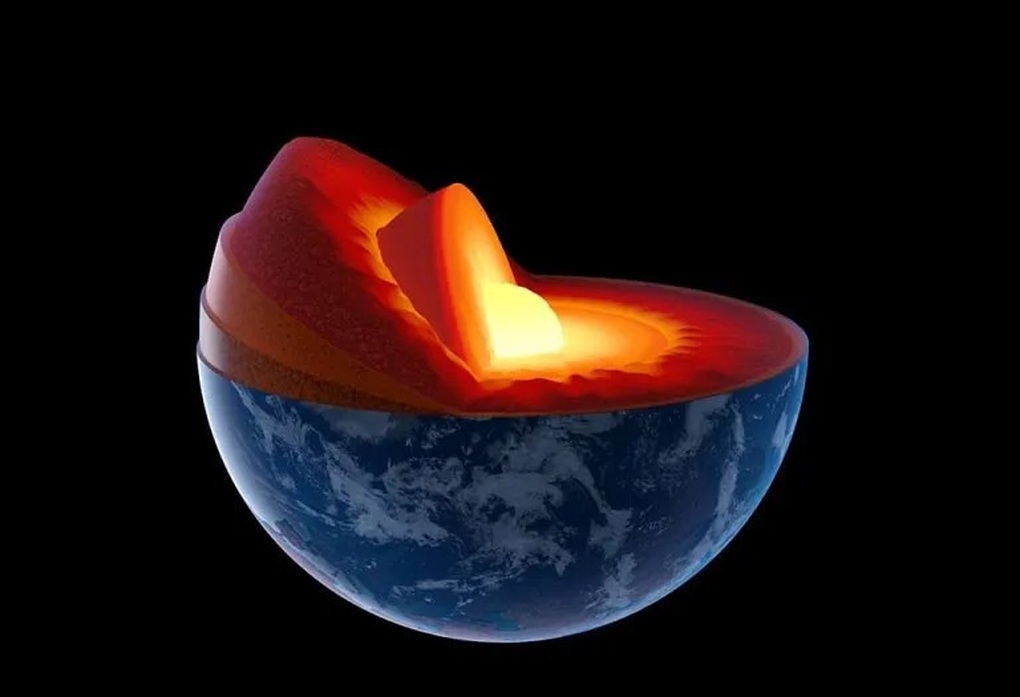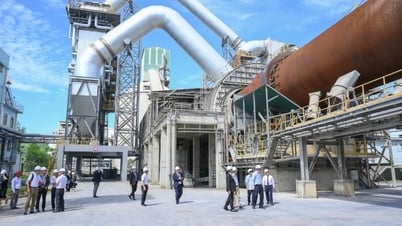In the global energy transition race, a promising candidate is emerging: natural hydrogen - a colorless, odorless gas that emits almost no carbon and exists underground.
Recently, an international research team led by Professor Chris Ballentine (Oxford University) announced an important step forward in the journal Nature Reviews Earth and Environment .
They have for the first time provided a geological map and a specific "recipe" for searching for natural hydrogen pockets. This is considered the key to opening the future for a clean energy source, enough to supply humanity for... 170,000 years.
Turning point from geological laws
Over the years, discoveries of natural hydrogen have been sporadic, without any clear pattern.
But now, by synthesizing hundreds of geological documents, the team has identified three decisive factors for the formation of a hydrogen deposit: the presence of a hydrogen source, a reservoir rock layer, and a gas-sealing rock layer.

Pockets of hydrogen gas are believed to lie in the Earth's crust (Photo: Getty).
These factors must converge in the same area for hydrogen to be produced, accumulated, and trapped underground for millions of years.
Hydrogen can be produced by natural chemical reactions, typically when water percolates through iron-rich rocks such as basalt at high temperatures.
These reactions produce molecular hydrogen, a form that can be exploited as fuel. If the area has rocks that are porous enough to trap the gas and a seal that prevents it from escaping, a natural pocket of hydrogen will form. This is similar to the principle of oil and gas formation, but much cleaner.
The study found that certain geological formations, such as ophiolites — ancient oceanic crust pushed onto land — vast magmatic provinces or ancient greenstone belts — are likely to be highly hydrogen-rich.
Notably, a giant pocket of hydrogen was discovered in 2024 in Albania, located in an ophiolite block. This opens up hope that natural hydrogen is not something so rare, but a treasure that is still "hidden" waiting for humans to awaken.
Great opportunity - great challenge
What sets natural hydrogen apart from industrially produced hydrogen is its sustainability. Currently, most hydrogen for industry and transportation is extracted from natural gas or coal – a process that still emits CO₂, making industrial hydrogen not yet considered truly clean energy.
Meanwhile, if hydrogen can be exploited from natural gas pockets underground, humans can access a zero-emission, environmentally friendly fuel source that is independent of coal, oil, and gas.
However, the journey to find natural hydrogen is not easy. This gas is very light, and can easily escape if the geological structure is not tight enough. In addition, some underground bacteria can "eat" the hydrogen before humans can access it.
That means not every place with the right conditions for hydrogen production can be exploited. Drilling deep into the ground to test each potential spot requires sophisticated technology and a large investment, similar to the modern oil and gas industry.
Yet the opportunity is being pursued by many large corporations. Names such as BP, Rio Tinto and Breakthrough Energy - the energy investment fund of billionaire Bill Gates - are all focusing on geological mapping research and natural hydrogen extraction technology.
With the backing of these "big guys", the prospect of commercializing natural hydrogen is no longer too far away.
Energy source for millennia?
The 170,000-year figure the team came up with is not an estimate. They calculated that the total amount of hydrogen produced by the Earth in its rocky crust would be enough to meet the current energy consumption needs of all humanity during that time.
The important question that remains is: how much of that will we tap, and where will we start?
It is not only a scientific story, but also the key to help humanity take a big step forward in the fight against climate change. When oil fields are gradually depleted and solar and wind batteries still have many limitations, who knows, the solution may be right under our feet.
Source: https://dantri.com.vn/khoa-hoc/tim-thay-chia-khoa-cho-nguon-nang-luong-sach-du-dung-170000-nam-20250521010956691.htm



![[Photo] Scientific workshop "Building a socialist model associated with socialist people in Hai Phong city in the period of 2025-2030 and the following years"](https://vphoto.vietnam.vn/thumb/1200x675/vietnam/resource/IMAGE/2025/5/21/5098e06c813243b1bf5670f9dc20ad0a)
![[Photo] Coming to Son La, let's "show off" with the Wallflowers](https://vphoto.vietnam.vn/thumb/1200x675/vietnam/resource/IMAGE/2025/5/21/627a654c41fc4e1a95f3e1c353d0426d)

![[Photo] Prime Minister Pham Minh Chinh receives Rabbi Yoav Ben Tzur, Israeli Minister of Labor](https://vphoto.vietnam.vn/thumb/1200x675/vietnam/resource/IMAGE/2025/5/21/511bf6664512413ca5a275cbf3fb2f65)
![[Photo] Prime Minister Pham Minh Chinh receives the President of Asia-Pacific region of PowerChina Group](https://vphoto.vietnam.vn/thumb/1200x675/vietnam/resource/IMAGE/2025/5/21/0f4f3c2f997b4fdaa44b60aaac103d91)



















































































Comment (0)